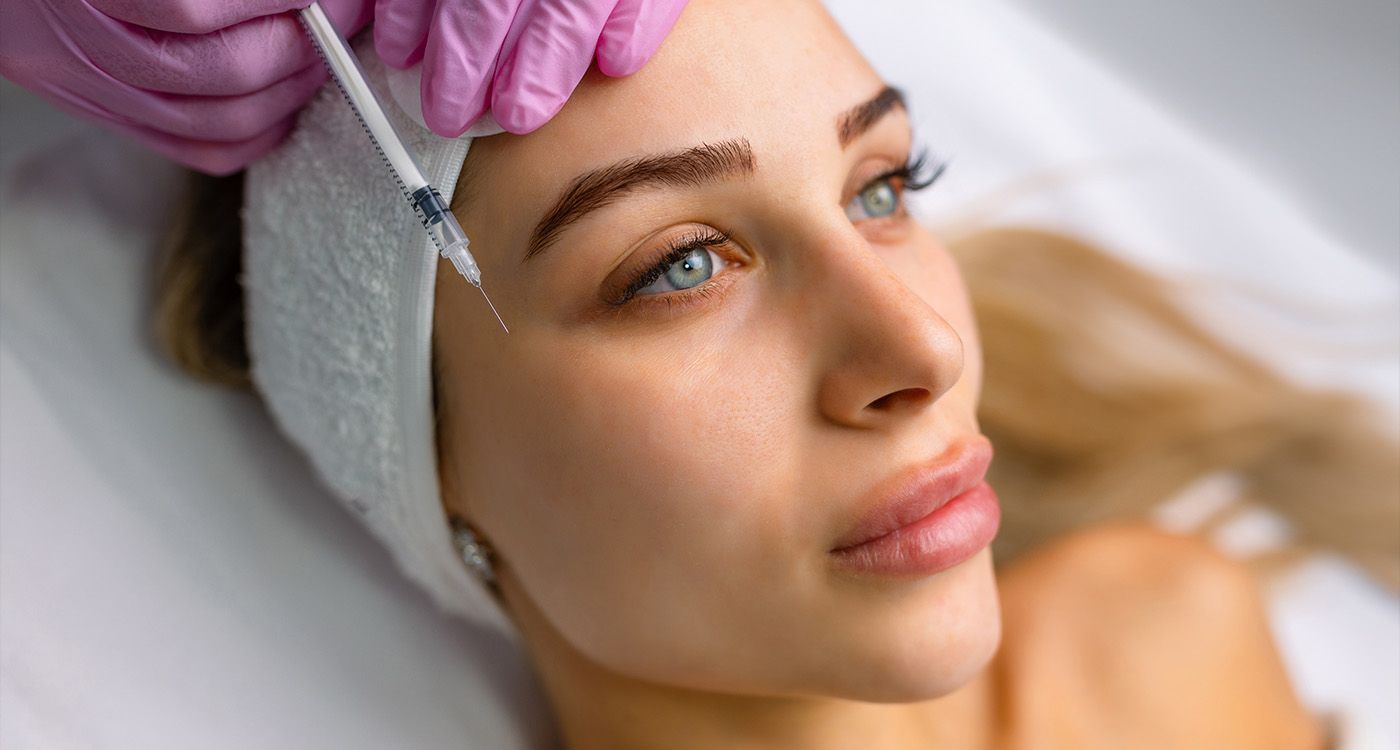- Home
- Highlights
- Botox: The Restorative Needle – Miracle or Risk?

©Shutterstock
Botox smooths the forehead, erases wrinkles and has spread everywhere – even in Lebanon, where each treatment zone costs around $150. But behind the promise of instant results lie real risks, especially when the procedure is performed outside a medical office – a point confirmed by Professor Roland Tomb, Honorary Dean of the Faculty of Medicine at Saint Joseph University in Beirut and dermatologist-allergist at Hôtel-Dieu de France. A closer look.
Looking to wipe out those stubborn lines at the corners of the eyes or across the forehead? Botox, the undisputed star of aesthetic medicine, promises this little miracle in under ten minutes – an ultra-fine needle, a few well-placed injections, and your face looks refreshed again, sometimes within a week. The secret? Type A botulinum toxin, a molecule that blocks muscle contractions where wrinkles form. The result: smoother skin, softened lines and a renewed sense of youth for four to six months.
Yet a clarification is in order: while “Botox” is now commonly used, it is actually a registered trademark owned by the American company Allergan, now part of the pharmaceutical group AbbVie. Much like Kleenex for tissues, the name has become shorthand for botulinum toxin – though in practice, this particular product is rarely used in Lebanon. Local practitioners often favor Dysport, a well-known British competitor, or other Korean or Chinese brands, whose reliability can vary.
Botox’s popularity isn’t just about its effectiveness. In Lebanon, where a treatment zone costs around $150, the procedure has become widely accessible. No need for social downtime or anesthesia – you can literally squeeze in a freshness boost between appointments and walk out as if nothing happened. The results don’t take long: three to seven days later, the forehead appears smoother, crow’s feet fade and the face relaxes without losing its natural expression… provided, of course, the injections are done correctly.
And here’s the catch: behind its reputation as a “miracle shot,” Botox remains a powerful drug that must be handled with the utmost care. Its mechanism of action – remarkably effective – demands strict medical precision. The toxin works at the neuromuscular junction, blocking nerve signals and forcing the muscle to rest. But if the injection is even a millimeter off, the whole face can pay the price. A drooping eyelid, an uneven smile, a permanently startled look – Botox mishaps leave no room for error.
The High Stakes of a Misplaced Injection
The real danger begins when injections leave the realm of medicine. In Lebanon, some beauticians now offer Botox in salons or even at home. This drift alarms doctors, because the procedure is anything but trivial. It’s not a simple cream or beauty mask – it’s a technical act that requires precise knowledge of facial anatomy, a skilled hand and an accurate diagnosis. Normalizing the syringe paves the way for complications: counterfeit products, overdoses, asymmetry, lack of follow-up, and sometimes damage far worse than a misplaced wrinkle.
In a medical office, safety comes first. Before a single injection, the practitioner observes, analyzes, identifies the muscles behind each wrinkle, adjusts the dose to each muscle’s strength and reviews the patient’s medical history. Side effects – real though uncommon when protocols are followed – usually amount to nothing more than slight redness, a small bruise or mild tension. And if any issue arises, the doctor knows how to respond, monitor and reassure.
Botox is no gimmick. Its popularity rests on a precise formula: effectiveness, reversibility, accessibility. But respecting the medical framework is non-negotiable. Outside this system, the lure of low-cost treatments can quickly turn into a nightmare. A relaxed face, yes, but not at the cost of your health.
Ultimately, there’s only one rule: entrust your smile, your eyes and your forehead in the hands of a professional, or don’t do it at all. Reclaimed youth is worth more than a gamble.
FAQ – All You Need to Know Before Taking the Leap
How long does a Botox session last?
Generally, the injection itself takes less than 15 minutes. A preliminary assessment and discussion with the doctor can extend the appointment to around half an hour.
When do you see the first results?
Effects start to appear between three and seven days after the injection, with optimal results visible after one to two weeks.
Can you resume activities immediately afterward?
Yes, there’s no social downtime. However, it’s recommended to avoid intense physical activity, exposure to heat (steam rooms, saunas), and to massage the injected area for the first six hours.
At what age can you consider Botox?
There’s no strict minimum age, but most patients start between 30 and 40, once expression lines become noticeable. Doctors may refuse treatment for younger patients unless there’s a specific medical indication.
Is Botox compatible with other aesthetic treatments?
Yes, it can be combined with hyaluronic acid fillers, laser treatments or chemical peels. However, the sequence and timing of each procedure should always be determined by a doctor to avoid interactions or increased side effects.
Should any medications be stopped before the session?
It’s important to inform your doctor of any ongoing treatments, especially blood thinners or medications that increase bleeding risk. Only the doctor can decide if adjustments are necessary.
Botox: More Than Just a Wrinkle Treatment
Did you know that Botox isn’t limited to cosmetic use? Originally developed for neurology, botulinum toxin also treats a range of conditions: muscle spasms, blepharospasm (uncontrolled blinking), excessive sweating (hyperhidrosis), chronic migraines and some types of bruxism (teeth grinding at night). In every case, the principle is the same: blocking excessive muscle contraction. It’s yet another reminder that, with Botox, results depend entirely on the technique and the medical indication.
Read more




Comments